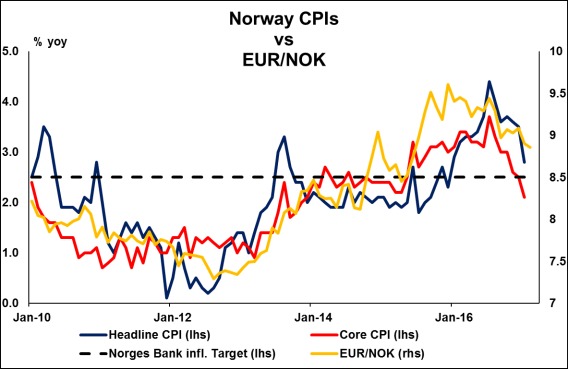Next week’s market movers
- In Eurozone, we expect the ECB to remain on hold and maintain its dovish bias amid non-accelerating underlying inflationary pressures.
- The Reserve Bank of Australia is forecast to stand pat as well. We share this view, following recent comments from Governor Lowe and mixed economic data.
- In the US, the final employment report before the Fed’s March meeting is likely to add the finishing touch to market expectations regarding a hike at that gathering.
- We also get key economic data from China, the US, Canada, and Norway.
On Monday, we have a relatively light calendar, with no major events or indicators due to be released.
On Tuesday, during the Asian morning, the Reserve Bank of Australia will announce its rate decision. The forecast is for the Bank to remain on hold, a view we share following strong hints from Governor Lowe last week that the bar for any further easing is high. The Governor said that the officials are concerned with the high levels of household debt being a risk to financial stability, and that any more rate cuts could amplify that risk. In addition, the Bank has maintained a neutral bias in all of its recent communications, and in its latest policy statement, it even disregarded the softness in recent Australian data as being transitory. Considering that economic data have been mixed since that gathering, with GDP growth rebounding strongly in Q4 but the labor force participation rate falling in January, we do not expect the Bank to change its neutral tone. The fact that iron ore prices have remained elevated in recent months and have risen even further since the latest gathering, supports our view as well.
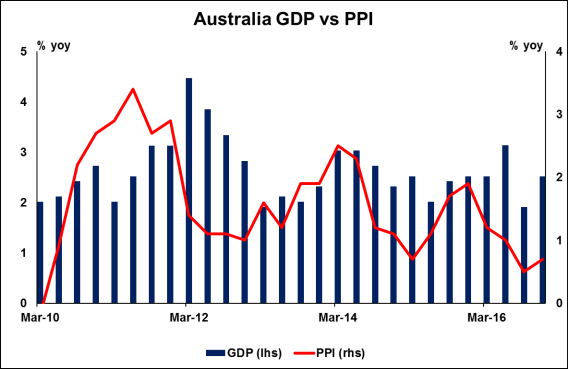
On Wednesday, during the Asian morning, we get China’s trade data for February. The forecast is for the nation’s trade surplus to have narrowed significantly, possibly because imports are expected to have risen much faster than exports in yearly terms. The case for further progress in exports is supported by the nation’s Caixin manufacturing PMI for the month, which indicated the fastest increase in new export business since September 2014. A significant acceleration in imports is supported by the yuan’s recovery since January, as it may have increased the purchasing power of Chinese consumers.
In the US, the ADP employment report for February is due out. The private sector is expected to have added 180k jobs, less than the robust 246k in January, but still a solid number that could raise speculation for the NFP figure to meet its forecast of 180k as well. What’s more, we think that following the new administration’s freeze on public sector hiring in late January, we are likely to see the ADP print coming in closer to the NFP number moving forward, considering the NFP figure will now include far fewer public employees, which are not measured in the ADP report.
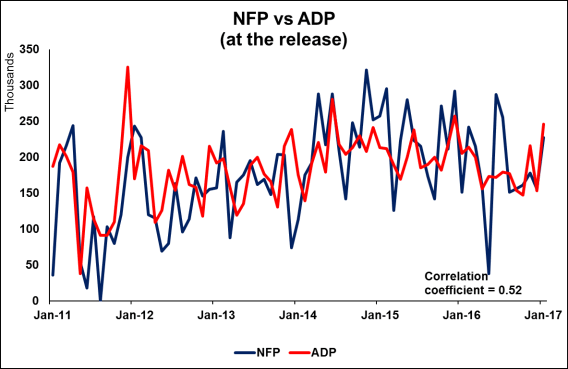
On Thursday, the highlight of the day will be the ECB policy decision, followed by a press conference from President Draghi. The Bank was surprisingly dovish at the latest meeting, in our view. Although the bloc’s headline inflation rate for December surged to a level last seen in 2013, President Draghi downplayed the importance of that improvement. He pointed out that he sees no convincing upward trend in underlying inflation, and that the latest progress in the CPI is mainly due to energy-related effects. He implied that until there is material progress in the core CPI rate, the Bank is likely to keep its policy stance unchanged. Considering that February’s CPI data showed more of the same, i.e. a rising headline rate but a flat core rate, we doubt that the Governing Council will shift away from its dovish bias at this meeting. As such, we think that this meeting may be a repetition of the previous one. Like last time, President Draghi may try to balance the recent progress in forward-looking indicators such as the PMIs, with the fact that underlying inflationary pressures have not begun to pick up yet.
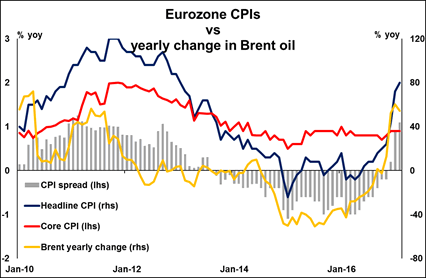
Earlier in the day, during the Asian morning, China’s inflation data for February are due out. In the absence of any forecast, we expect both the CPI and the PPI rates to have remained more or less unchanged, with risks skewed to the upside. We base our view on the February Caixin manufacturing PMI survey, which showed that the rate of input price inflation remained sharp, prompting firms to raise their final-product prices. Both the CPI and the PPI rates rose sharply in recent months, which was undoubtedly a pleasant development for the PBoC. The Bank has been tightening its policy in past weeks following the US election results, in order to halt some of the depreciation pressure on the yuan. As such, we think that further acceleration in inflation gives the Bank even more room to continue tightening its policy in the foreseeable future, if deemed necessary. What’s more, the steady surge in the PPI rate from well-within the negative territory to +6.9% yoy in January is likely to be also welcomed by foreign central banks facing weak underlying inflationary pressures, such as the ECB and BoJ. Considering that falling Chinese producer prices between 2012 and 2016 may have held down imported inflation in the Eurozone and Japan, the turnaround in that dynamic may actually support the inflation prints of those nations.
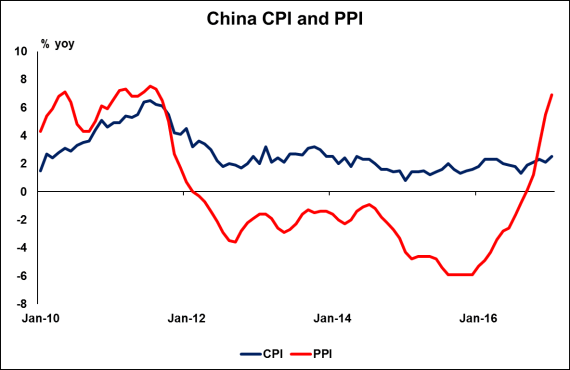
On Friday, the US employment report will take center stage. Nonfarm payrolls are forecast to have risen by 180k, less than the 227k in January, but still a solid number that is consistent with further tightening in the labor market. The unemployment rate is expected to have ticked down, while average hourly earnings are forecast to have accelerated on both a monthly and a yearly basis. This would be a sign that the softness in January’s earnings was just an outlier and may amplify even further speculation regarding a March rate hike by the Fed. As things currently stand, our view is still that June is a more likely candidate for a hike than March, despite the recent string of optimistic comments by various Fed officials that the case for a near-term rate increase has strengthened. We think that the greater than 50% probability for a March hike is overly optimistic, mainly because there has not been a phenomenal change in the economic outlook following the February meeting to justify such a shift in Fed rhetoric. Let’s not forget that the minutes of that meeting showed many officials held a cautious stance, judging that the Fed would have "ample time" to respond if inflation emerged. At the time of writing, Yellen and Fischer are yet to speak. In order to reassess our non-consensus view, we would like to see hawkish signals from both Yellen and Fischer, as well as a rebound in the average hourly earnings rate of this employment report.
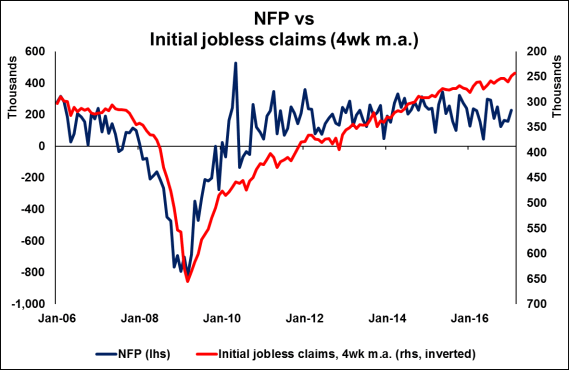
We also get Canada’s employment data for February, though no forecast is available yet. Our own view is that the labor market probably tightened further during the month. We base our expectations on the nation’s Markit manufacturing PMI for the month, which showed that greater business confidence contributed to the strongest increase in employment for 27 months. Even though this is likely to be a pleasant development for the BoC, we doubt that it will lead to a significant change in the Bank’s cautious tone. At its policy meeting on Wednesday, the BoC signaled that it is worried about a strengthening Loonie muting the outlook for exports. As such, although economic data are improving on the whole and oil prices remain elevated, we think that the BoC is likely to maintain its somewhat cautious tone in the foreseeable future, as it prefers to prevent CAD from strengthening too much.
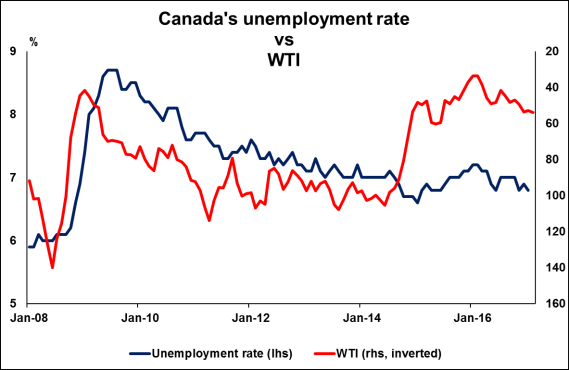
From Norway, we get CPI figures for February. In January, both the headline and the core rates declined by much more than expected, though the headline rate still remained above the Norges Bank target of 2.5%. At its latest policy gathering, the Bank maintained a neutral tone overall. The officials noted that although there are prospects for inflation to be lower than projected, any potential easing to offset that would likely boost further the already-elevated housing prices, thereby amplifying financial stability risks. This suggests that the bar for easing is quite high, making us conclude that the Bank may be tolerant for some more slowdown in inflation before it turns its sight on the easing button.
